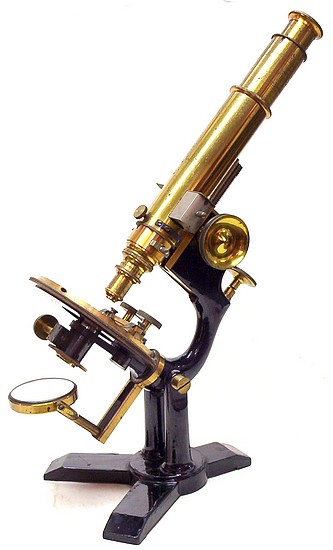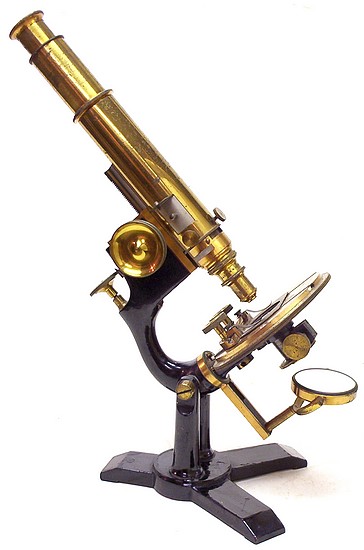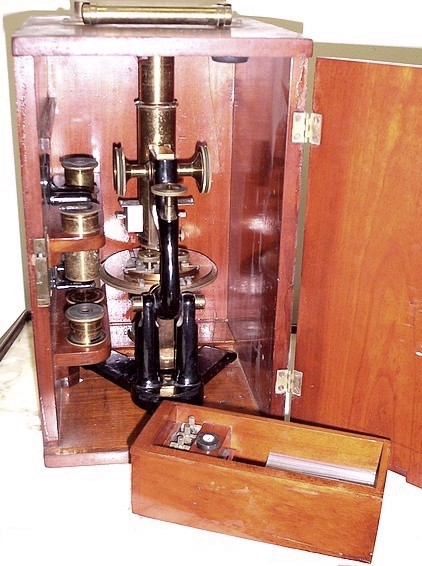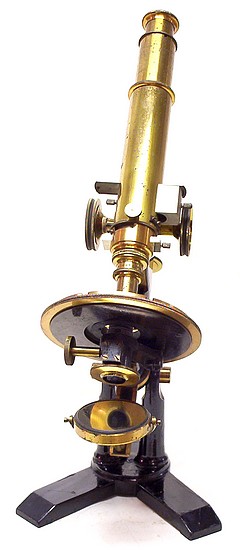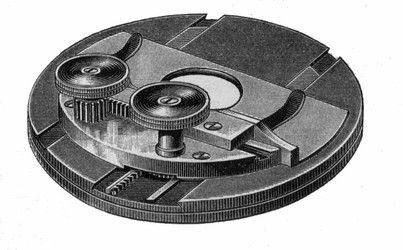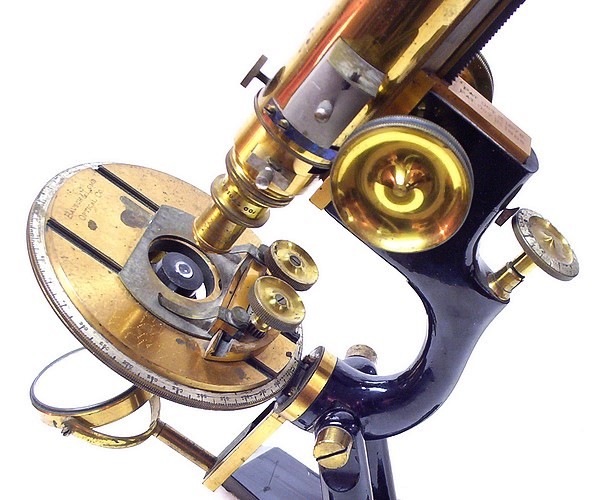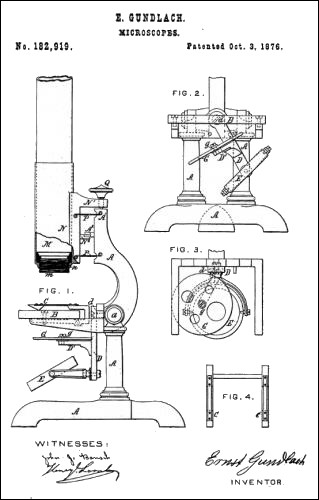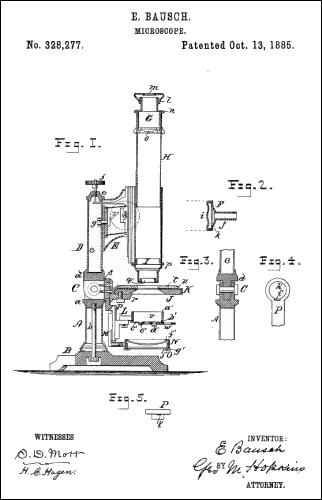The Bausch & Lomb mechanical stage can be adapted to any Microscope
which will admit of a stage 3 1/2 in. in diameter. The movements are
all contained on the upper surface of the stage, and it can therefore
be completely rotated. It is thin and will admit the use of very oblique light.
This microscope was
designed in 1887 by Dr. George H. Williams,
Professor of Mineralogy and Inorganic Geology,
at the Johns Hopkins University. It is based on
the
Bausch & Lomb "Model" microscope and was the
first American designed and manufactured petrological
microscope. The instrument is described in an article
published in The American Journal of
Science, pg. 114, 1888
The following was extracted from the 1892 Bausch and Lomb
catalog; it indicates that either the Model, Universal, or Professional stands could be converted to petrological instruments:
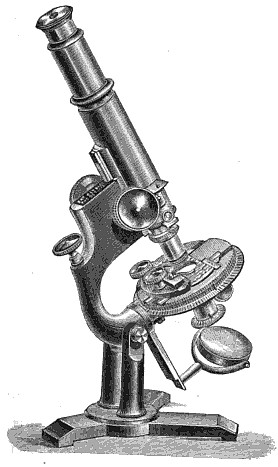
No. 570--PETROGRAPHICAL MICROSCOPE.
The rapidly increasing interest in microscopical work in
geology which is manifested in all parts of:
Americas, together with the difficulty and expense
of importing instruments for this purpose from
Europe seems warrant the construction of a fully
equipped petrographical microscope at home.
The importance of
supplying this want in the United States was
suggested by Dr. George H. Williams, Associate
Professor of Mineralogy and: Inorganic Geology in
the Johns Hopkins University, Baltimore who has
specified various points necessary to a microscope
destined especially for rock-study, and who has
approved the complete instrument as submitted to
him for examination. It is believed that this
microscope embodies the best features of the
European instruments and that it is superior to any
them now offered for the same price. The cut and
description apply to the microscope as applied to
our Model stand in which it is exceedingly compact
and low priced; but we attach it as well to the
Universal and Professional stands in which
connection they are proportionally elaborate. The
essential features of the Petrographical Microscope
are as follows:
1--The lower
Nicol (polarizer): is mounted in a
cylindrical box beneath the stage to which it is
held by a swinging arm so that it may be thrown:
instantly to one side if desired. This polarizer
may be vertically raised or depressed by rack and
pinion movement, and is also capable of an axial
revolution upon a graduated silvered circle. It is
provided with a compound lens for securing
converged polarized light, which may be removed at
will.
2--The
stage consists of our circular mechanical
stage (No. 1054) provided with graduated scales to
mark both of its rectangular movements. It is
adapted for complete concentric revolution, and is
provided with graduated and silvered circle and
index reading to degrees.
3--The
nose-piece is provided with a special
adapter to which the objective may be screwed. Into
this are made to slip four of the following
accessories each mounted in a separate brass frame:
a, Bertrand's lens for magnifying the
interference figure: b, a quarter
undulation-mica-plate: c, a quartz wedge:
d, a Klein quartz-plate, or a gypsum-plate
with red first order.
4--The
centering screws are provided in the
nose-piece for accurately centering the various
objectives.
5--The upper
Nicol (analyzer) is enclosed in one side
of a double-chambered box, the other side being
left vacant, So that it may be slid in and out of
the tube at will, without at any time leaving an
opening through which dust may enter.
No.
570,
Model Petrographical stand as described, with any
of our Huyghenian eye-pieces, in: polished: case
with handle; lock and key, drawer for accessories
and receptacles for eye-pieces and objectives...
$108.00
No.
571,
The above with eye-pieces A or B, provided: with
cross hairs, eye-piece C (No. 702) provided with
micrometer; objectives 3/4 inch (No. 605) and 1/5
inch (Nos. 610 or 611), pliers, slides and covers;
magnifying power with tube at standard length, 50
to 485 diameters... $135.00
No.
572,
Universal Petrographical Stand, same outfit as No.
570... $133.00
No.
573,
The above with same outfit as No. 571...
$160.00
No.
574,
Professional Petrographical stand, same outfit as
No. 570... $210.00
No.
575,
The above with eye-pieces A (No. 700) with cross
hairs, B (No. 701), C (No. 702) with micrometer, D
(No. 703); objectives 2 inch (NO. 602), 3/4 inch
(No. 605), 1/5 inch (No. 610 or 611), 1/8 inch (No.
612), pliers, slides and covers; magnifying power
25 to 980 diameters... $200.00
